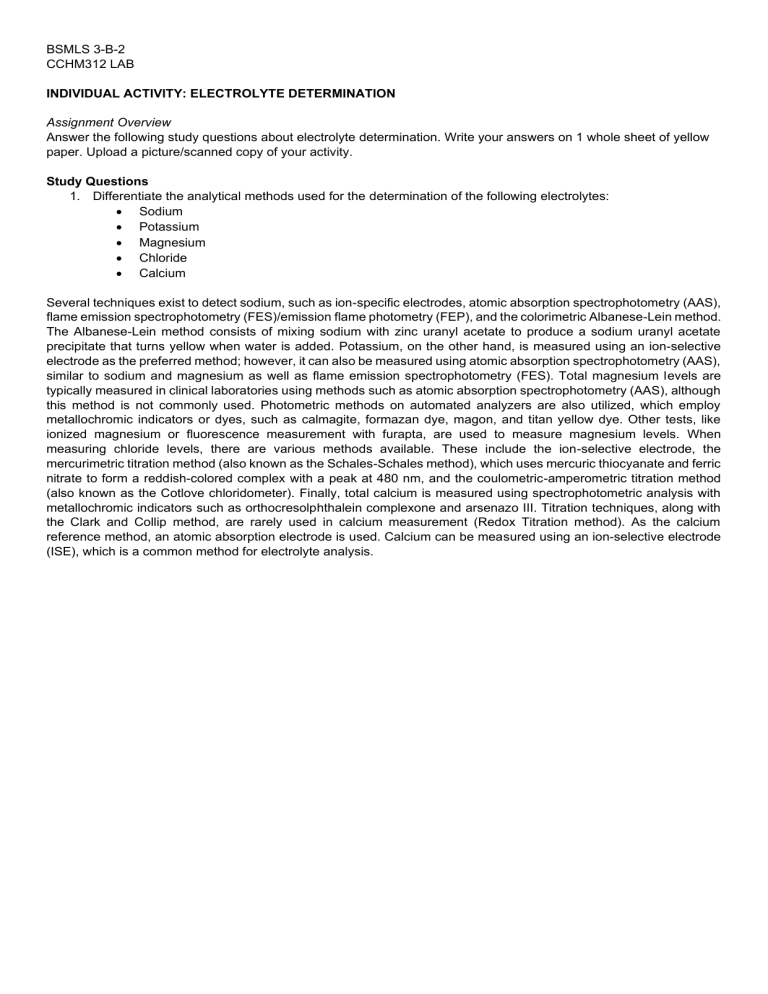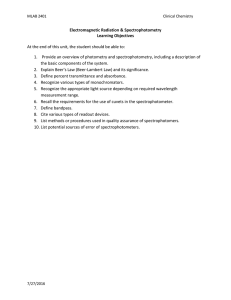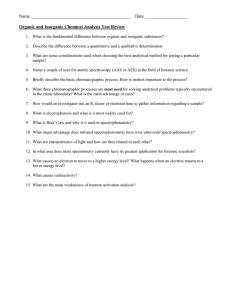
BSMLS 3-B-2 CCHM312 LAB INDIVIDUAL ACTIVITY: ELECTROLYTE DETERMINATION Assignment Overview Answer the following study questions about electrolyte determination. Write your answers on 1 whole sheet of yellow paper. Upload a picture/scanned copy of your activity. Study Questions 1. Differentiate the analytical methods used for the determination of the following electrolytes: • Sodium • Potassium • Magnesium • Chloride • Calcium Several techniques exist to detect sodium, such as ion-specific electrodes, atomic absorption spectrophotometry (AAS), flame emission spectrophotometry (FES)/emission flame photometry (FEP), and the colorimetric Albanese-Lein method. The Albanese-Lein method consists of mixing sodium with zinc uranyl acetate to produce a sodium uranyl acetate precipitate that turns yellow when water is added. Potassium, on the other hand, is measured using an ion-selective electrode as the preferred method; however, it can also be measured using atomic absorption spectrophotometry (AAS), similar to sodium and magnesium as well as flame emission spectrophotometry (FES). Total magnesium levels are typically measured in clinical laboratories using methods such as atomic absorption spectrophotometry (AAS), although this method is not commonly used. Photometric methods on automated analyzers are also utilized, which employ metallochromic indicators or dyes, such as calmagite, formazan dye, magon, and titan yellow dye. Other tests, like ionized magnesium or fluorescence measurement with furapta, are used to measure magnesium levels. When measuring chloride levels, there are various methods available. These include the ion-selective electrode, the mercurimetric titration method (also known as the Schales-Schales method), which uses mercuric thiocyanate and ferric nitrate to form a reddish-colored complex with a peak at 480 nm, and the coulometric-amperometric titration method (also known as the Cotlove chloridometer). Finally, total calcium is measured using spectrophotometric analysis with metallochromic indicators such as orthocresolphthalein complexone and arsenazo III. Titration techniques, along with the Clark and Collip method, are rarely used in calcium measurement (Redox Titration method). As the calcium reference method, an atomic absorption electrode is used. Calcium can be measured using an ion-selective electrode (ISE), which is a common method for electrolyte analysis.




